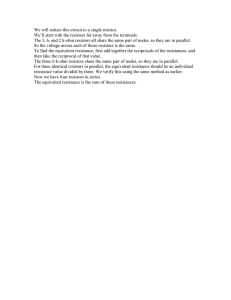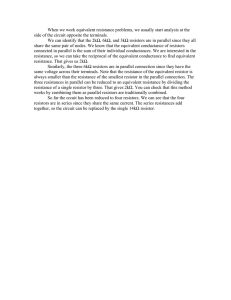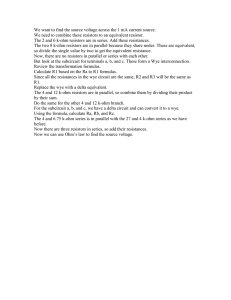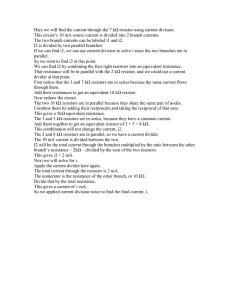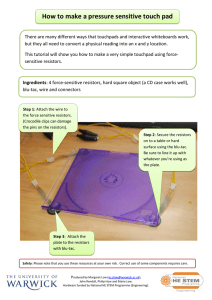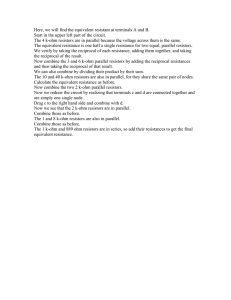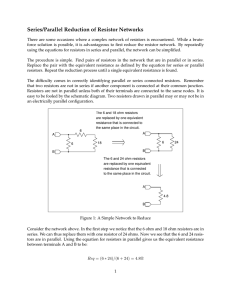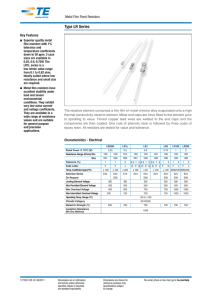Here, we will find the source current, i.
advertisement
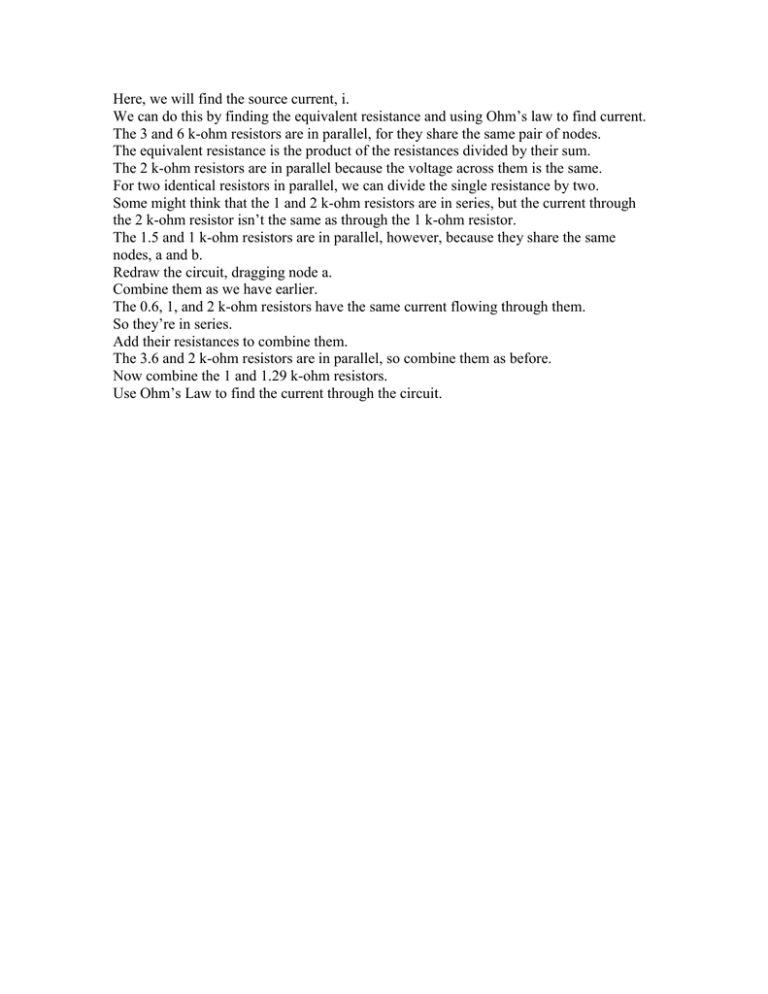
Here, we will find the source current, i. We can do this by finding the equivalent resistance and using Ohm’s law to find current. The 3 and 6 k-ohm resistors are in parallel, for they share the same pair of nodes. The equivalent resistance is the product of the resistances divided by their sum. The 2 k-ohm resistors are in parallel because the voltage across them is the same. For two identical resistors in parallel, we can divide the single resistance by two. Some might think that the 1 and 2 k-ohm resistors are in series, but the current through the 2 k-ohm resistor isn’t the same as through the 1 k-ohm resistor. The 1.5 and 1 k-ohm resistors are in parallel, however, because they share the same nodes, a and b. Redraw the circuit, dragging node a. Combine them as we have earlier. The 0.6, 1, and 2 k-ohm resistors have the same current flowing through them. So they’re in series. Add their resistances to combine them. The 3.6 and 2 k-ohm resistors are in parallel, so combine them as before. Now combine the 1 and 1.29 k-ohm resistors. Use Ohm’s Law to find the current through the circuit.

